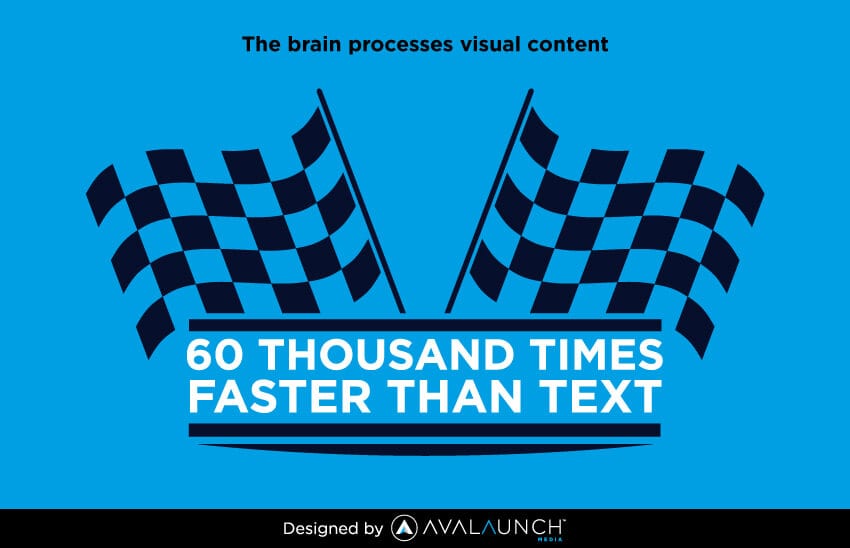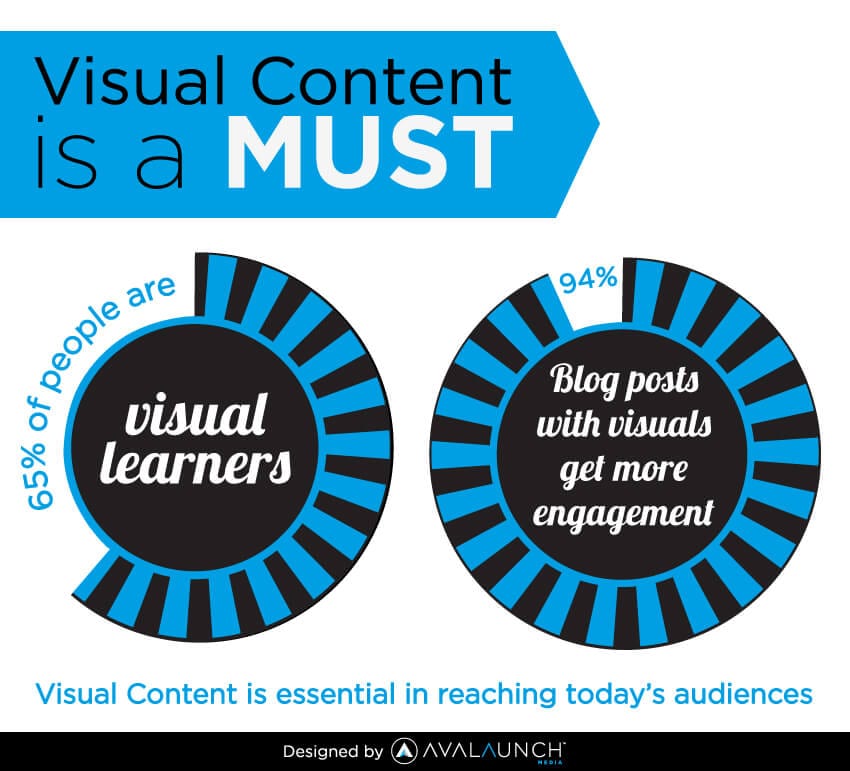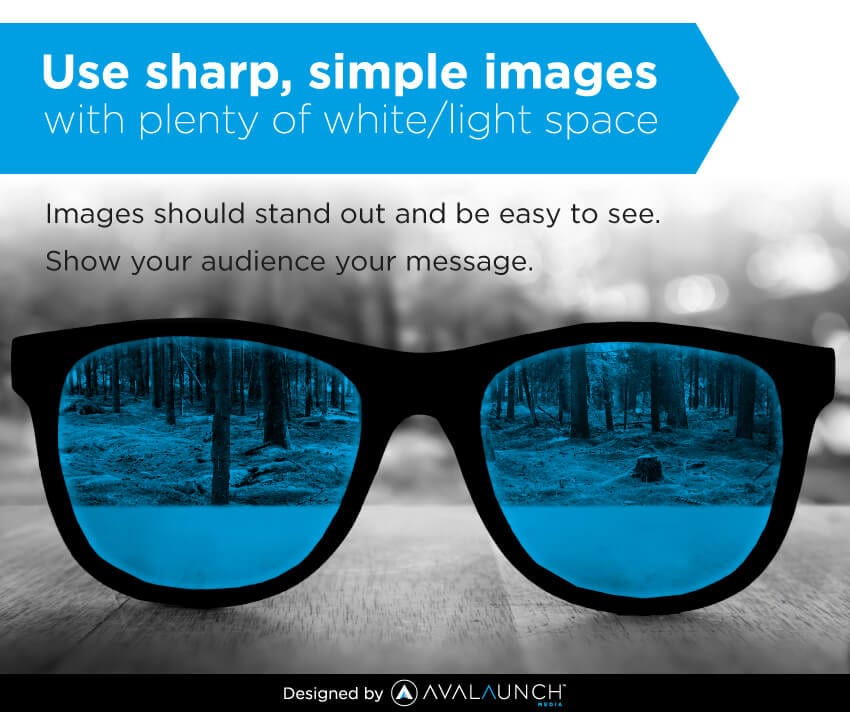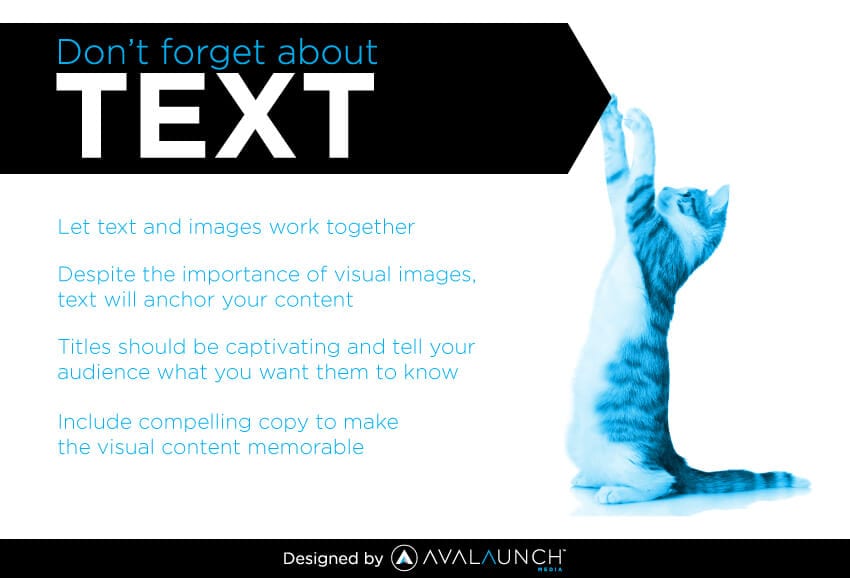We’ve all heard the saying that a picture is worth a thousand words. It has never been more true for content marketing. What the picture represents in digital marketing is a thousand words of successful conversion-focused content.
With the ability to upload photos and create visual images for the web, audiences are turning to visual content to attract their attention. Most media consumption focuses on the visual. Media use is projected to rise to 15.5 hours per person per day according to research conducted at the San Diego Supercomputer Center (SDSC). Most of that media consumption will include visual content.
According to research done by Ipsos Open Thinking Exchange (OTX), an average of 3.2 hours each day is spent on social networks. Success of visual images is even more profound along social media lines:
-
With 70,000,000 users, Pinterest has grown faster than any other independent site in history
-
Each pin averages 78 cents, up 25% from 2012
-
Instagram has 300,000,000 *active users with 1.2 billion likes per day and 20 billion shared photos (updated 12/15/14)
-
60 million photos are uploaded every day to Instagram
-
1,317,000,000 use Facebook
-
350 million photos are uploaded to Facebook every day
So why does visual content do so well?
Visual content is a fast way to convey information. According to BBC Business, an estimated 90% of all the data in the world today has been created in the past few years. From music to movies and from status updates to news, people are becoming overwhelmed with the amount of information available. To combat this overload of information, skimming text—or in most cases ignoring it—has become common. A well-designed, eye-catching graphic will stand out in a sea of text and encourage audiences to spend more time on your message: reading text, viewing a video clip, sharing, or commenting.

People respond better to visual information. Nearly 90% of the information submitted to the brain is visual, with images processing 60 thousand times faster than text. It is reported that 40% of people respond to visual information over plain text. “We were never born to read,” says neuroscience and reading researcher, Maryanne Wolf, in her book, Proust and the Squid: The Story and Science of the Reading Brain. Wolf explainsthat vision is pre-programmed into the human brain while reading does not come naturally. Reading, says Wolf, involves tapping into existing “visual circuits” of the brain in order to decode letters into words. What this research means for content marketers is that visual content is processed much easier than text. In a world where potential customers are overloaded with information, visual content makes your message easier to process and more likely to stand out.

Most of the population are visual learners. According to studyingstyle.com, 65% of the population are visual learners. In other words, 65% of your target audience will learn and understand more about your product or service through graphs, charts, infographics and visual guides. What’s more, visual learners relish the experience of seeing visually appealing content.

We understand more than we can say. Another reason visual content is successful in engagement is its ability to efficiently make sense of complex information. Fernande Saint-Martin, pioneer in semiotics, says in his book, Semiotics of Visual Language, that written language that can “deepen or master nonverbal experiences” (xiv). Today, it can be argued that written language includes the language of visual images. We have evolved into an information age where our experience with language has become multi-faceted. Fifteen years ago, pictures in books and other texts were considered somewhat juvenile. Today, audiences have come to expect visual content where visual images seem to hold as much authority as written language. Pictures convey emotion and opinion just as text. In many cases, pictures are more compelling than words.

Visual content shows rather than tells viewers your message. Captivating photos make blog posts more engaging. Visual content is essential to recipes and DIYs to show step-by-step instructions. Infographics break complex trends into digestible information. Keep in mind that while visual content is easy to understand and engage with, it is a time-consuming task to create and maintain a visual edge. An infographic that may take readers 2 minutes to process involves hours of behind-the-scene research and design to present that useful information. However, the effort in creating visual content is worth the work. Consider the following statistics about visual images in content:
-
Videos on landing pages increase page conversion rates by 90%
-
Posts with visuals receive 94% more page visits and engagement than those without
-
60% of consumers are more likely to click on a business whose images appear in search results
- http://ucsdnews.ucsd.edu/
pressrelease/u.s._media_ consumption_to_rise_to_15.5_ hours_a_day_per_person_by_2015 - http://www.marketingcharts.
com/online/social-networking- eats-up-3-hours-per-day-for- the-average-american-user- 26049/ - http://www.bbc.com/news/
business-26383058 - http://studyingstyle.com/
visual-learners.html

Interesting post! We all know that visual content is very important, but I’ve learned some new things from this post, and it’s fascinating. The power of visual content really makes sense when you consider that we were born with the ability to see but not with the ability to read.
Another thing is about where you wrote that with a visual content one can stand out in a sea of text. But what happens when there is a sea of visual content? How can one stand out? That’s where all the interesting new visual content types come into the picture (interactive, living pictures). But that’s for another post!
visual is better than words. indeed. One picture migh be equal to thousand or even million words. Using visual on our article will sharpening our intention.
As always, great info Mat! If anyone knows about visual content, it is Avalaunch! =)